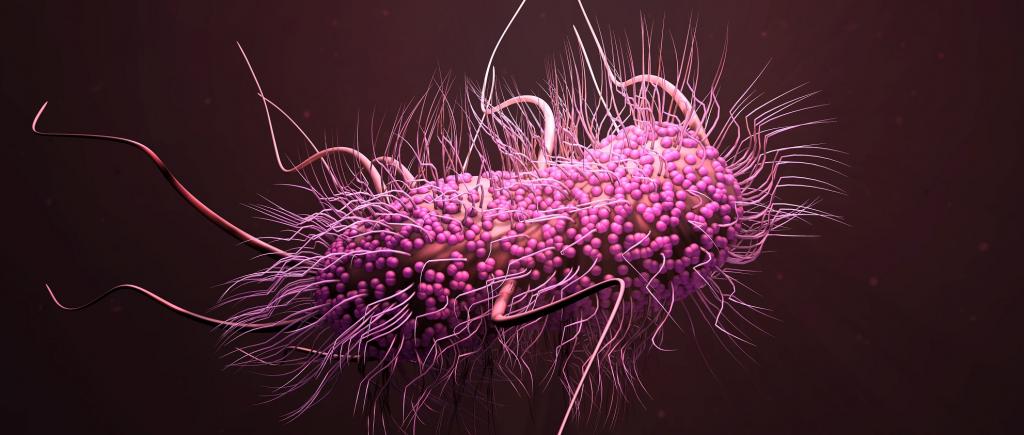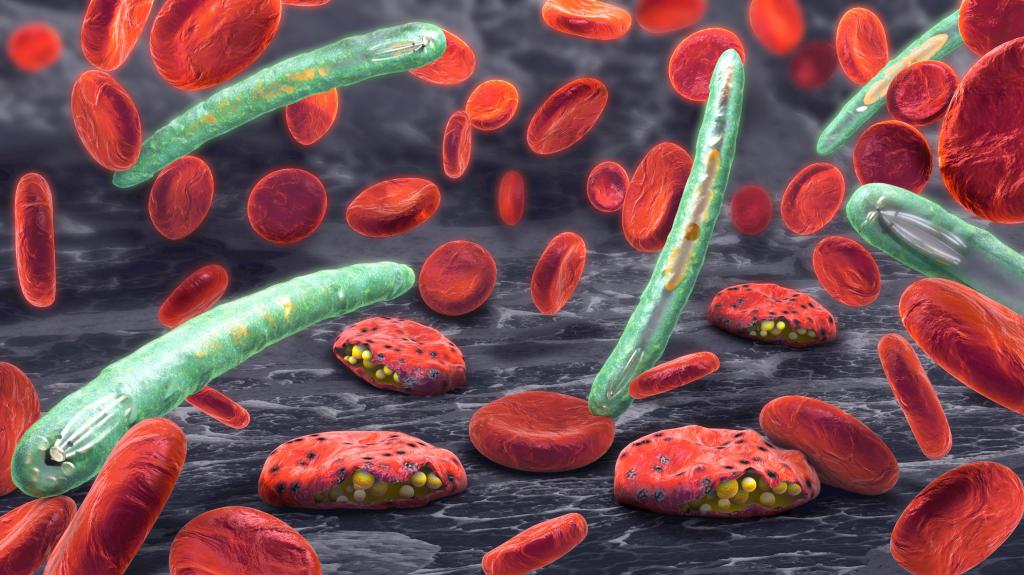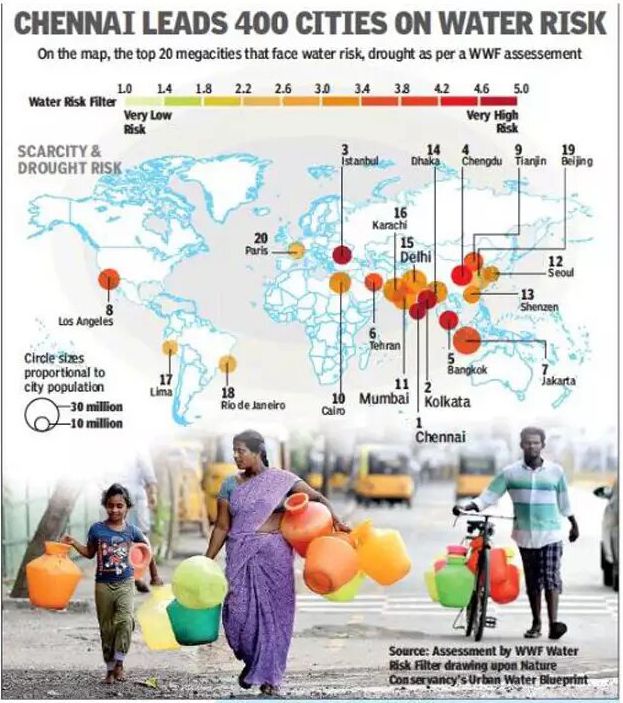Superbugs Can Be Transmitted Through Plants
Researchers at the University of Southern California have found that anti-microbial resistant bacteria or superbugs can be transmitted to humans through plants.
- Antibiotic-resistant infections are a threat to global public health, food safety and an economic burden
 .
. - To prevent these infections, it is critical to understand how these bacteria are transmitted.
- Spread of antibiotic-resistant superbugs from plants to humans is different from outbreaks of diarrheal illnesses caused immediately after eating contaminated vegetables. Superbugs can asymptomatically hide in (colonise) the intestines for a long time while escaping and causing an infection.
- The study shows the linkage shared by the environment and human health to agriculture and microbiomes.
Superbug: It is a term used to describe strains of bacteria that are resistant to the majority of antibiotics commonly used today. Resistant bacteria that cause pneumonia, urinary tract infections and skin infections.
Antimicrobial Resistant-Bacteria
- Antimicrobial resistant-bacteria occur naturally and are found in people, animals, food, and the environment (in water, soil and air). They can spread between people and animals, including from food of animal origin, and from person to person.
- It is facilitated by the inappropriate use of medicines, for example, using antibiotics for viral infections such as the flu.
- Inadequately treated sewage waste containing resistant bacteria which mixes in the environment also magnify the burden of anti-microbial resistance.
Water Vulnerable Megacities in India
Four Indian cities, Chennai, Kolkata, Mumbai and Delhi have been ranked among the top 20 megacities in the world facing high levels of water scarcity.
- A study by World Wildlife Fund (WWF) evaluated 400 cities globally in 2018 with focus on megacities facing high combined levels of water scarcity — recent and projected drought.
Megacities
- Megacities are quantitatively defined as cities having a population of more than five, eight or ten million people.
- Because of their defining features, concentration of population, goods and services, megacities are particularly vulnerable to water-related risks, which are further amplified by climate change: large-scale flooding, pollution of water sources, water shortages etc.
- Faced with such difficulties, these cities also host a multitude of resources, including technical, scientific and human resources, to meet the challenges ahead.
- Chennai has emerged in top position as the city facing the most severe water scarcity and drought in the world.
- Kolkata has been ranked at number 2, Mumbai at 11 and Delhi at 15.
- Large cities, mostly located along the banks of large rivers, are vulnerable to water scarcity because of the vastly over-allocated and mismanaged river-systems.
- Frequent droughts and flooding due to climate change and depleting levels of water in the reservoirs are some of the reasons behind the water crisis in these megacities.
- Loss of wetlands is a key reason. Reports have noted that the world has lost 35% of its wetlands since 1970 and is losing them three times faster than forests.
- As the wetlands shrink, the city loses its natural waste water tank, and in the absence of enough sewage treatment plants, the wastewater goes straight into the river.
- East Kolkata Wetland, a Ramsar site is an example of the case.
The World Wildlife Fund (WWF)
- The WWF was founded in September, 1961, at the International Union for the Conservation of Nature and Natural Resources (IUCN)'s headquarters in Morges, Switzerland.
- As an international fundraising organization it is working in collaboration with existing conservation groups and bring substantial financial support to the conservation movement on a worldwide scale.
New Biomarker for Malaria Detection
 A researcher’s team from the Indian Council of Medical Research’s Jabalpur-based National Institute of Research in Tribal Health has identified Glutamate dehydrogenase as a new biomarker in the body of the malaria parasite for malaria detection.
A researcher’s team from the Indian Council of Medical Research’s Jabalpur-based National Institute of Research in Tribal Health has identified Glutamate dehydrogenase as a new biomarker in the body of the malaria parasite for malaria detection.
- It will help to develop a more sensitive and accurate diagnostic test for malaria detection.
Biomarker
- Biomarkers are key molecular or cellular events that link a specific environmental exposure to a health outcome.
- Biomarkers play an important role in understanding the relationships between exposure to environmental chemicals, the development of chronic human diseases, and the identification of subgroups that are at increased risk for disease.
Existing Method of Diagnosis
- Currently, tests used for diagnosing malaria are based on a gene, Histidine-rich Protein 2 (HRP2), replete with amino acid Histidine.
- The studies have shown that this gene is often absent in some strains of the malaria parasite. Consequently, significant levels of malaria infection were going undetected.
- Scientists across the world have been searching for new biomarkers that would be more effective. The study provides scientific evidence for the conserved nature of Glutamate dehydrogenase sequences in Indian isolates which can be used as a potential biomarker for diagnosis of malaria.
ICMR-National Institute of Research in Tribal Health (NIRTH)
- It is a permanent institute of Indian Council of Medical Research (ICMR) under the Department of Health Research, Ministry of Health of Family Welfare.
- The NIRTH was established on 1st March 1984 in Jabalpur by ICMR with the mandate to improve health and create awareness among tribals through applied and operational research. This institute is recognized by the World Health Organization as its collaborative Centre for the health of the indigenous population.
- The institute has conducted several important research projects on Malaria, Filaria, Tuberculosis, Diarrhea, Virology, Fluorosis and Social Sciences.
Mars Colonisation Through Sperm Bank
As per a study, the human colonies on Mars may be able to expand with shipments of sperm from Earth.
- The study has found out that exposure to low gravity environments does not damage the viability of frozen samples.
- The frozen samples of sperm exposed to microgravity retained similar characteristics to sperm samples kept on the Earth.
- The findings open the possibility of safely transporting male gametes to space and considering the possibility of creating a human sperm bank outside Earth.
- If the number of missions and spaceflights increases it is important to study the effects of long-term human exposure to space and probably consider thinking about the possibility of reproduction outside the Earth.
- It opens the possibility of female astronauts going to Mars, taking the sperm with them to populate a new world.
- The National Aeronautics and Space Administration (NASA) has stated that the first person to walk on Mars is likely to be a woman. It has set a goal of starting a colony on the planet by 2033.
The National Aeronautics and Space Administration (NASA)
- The National Aeronautics and Space Administration (NASA) is an independent agency of the executive branch of the United States federal government responsible for the civilian space program, as well as aeronautics and aerospace research.
- It was established under the National Aeronautics and Space Act 1958 and its headquarters are located in Washington, DC, USA.
DRDO’s Herbal Drug for Leucoderma
Defence Research and Development Organisation (DRDO) has developed a herbal drug 'lukoskin' for treatment of Leucoderma.
- Leucoderma is a skin and auto-immune disorder also called vitiligo.
Autoimmune disorders occur when the immune system attacks the body's own tissues and organs.
World Vitiligo Day 2019
- Every year, June 25 is observed as World Vitiligo Day to raise awareness about the disease.
- The theme for World Vitiligo Day 2019 is ‘The Quality of Life of a Vitiligo Patient’.
Significance
- Present remedies of vitiligo-like allopathic, surgical and adjunctive are either costly or single molecule based, with a very low level of efficacy and develop side-effects like a blister, edema, and irritation in the skin.
- Lukoskin, available in ointment and oral liquid form, has seven herbal ingredients having properties such as skin photosensitizer, anti-blister, anti-irritation, antiseptic, wound healing and copper supplementing properties, while the oral dose has been formulated to check the emergence of new spots.
Vitiligo or Leucoderma
- Vitiligo is a skin disease in which pale white patches start forming on the skin, due to lack of melanin (a pigment in the skin).
- It is neither contagious (i.e does not spread from getting in direct contact with the affected person) nor life-threatening.
- Genetic conditions or stress-induced situations are more prone to the occurrence of disease.
- Leucoderma patients are also vulnerable to inflammation in the iris, loss of hearing and sunburn.
Symptoms
- Vitiligo commonly occurs in people in their twenties; however, it can occur in any stage.
- People with autoimmune diseases, such as hyperthyroidism are more prone to it than those who don’t have any autoimmune diseases.
Facts
- The worldwide incidence of leucoderma has been reported at 1-2%.
- In India, its incidence is around 4-5%.
- In some parts of Rajasthan and Gujarat, its incidence is as high as 5-8%.
- Leucoderma (skin disorder) is considered a social stigma in India where people confuse it with leprosy (a contagious disease caused by bacteria).
SpaceX’s Falcon Heavy Rocket
SpaceX has launched its Falcon Heavy rocket carrying 24 experimental satellites on boosters that are being reused.
- The payloads have been assembled from several partners, including the National Oceanic and Atmospheric Administration, NASA and university research projects.
- The Falcon Heavy, which the company SpaceX considers to be the most powerful operational rocket in the world by a factor of two, will carry the two dozen spacecraft into three distinct orbits.
- The company also will attempt to land the Falcon Heavy’s two boosters back on earth simultaneously, then land the first stage of the rocket on a drone ship in the ocean about 770 miles away from where it initially takes off.
- SpaceX first demonstrated the 230-foot-tall (70-meter) Falcon Heavy in February 2018. In April 2019, it launched Falcon Heavy for its first paying customer, Saudi Arabia’s commercial satellite operator Arabsat.
- SpaceX is a private company founded in 2002 by Elon Musk. Its headquarters is located in Hawthorne, California (U.S.A).
Important Payloads and Technology Mission from NASA in Falcon Heavy
- Deep Space Atomic Clock: It is a technology demonstration that will help spacecraft navigate autonomously through deep space.
- Green Propellant Infusion Mission: A small satellite to test rocket fuel that is more environment-friendly.
Cement Pollution
The production of cement is a cause of 7 % of global carbon dioxide emissions, more than what comes from all the trucks in the world.
- Cement’s contribution to emissions is especially immense because of the chemical process required to make it.
- A ton of cement yields at least half a ton of CO2.
- Kilns are heated to more than 1,400 degrees Celsius, about four times hotter than a home oven set to the self-clean cycle.
- Inside the kiln, carbon trapped in the limestone combines with oxygen and is released as CO2, the most abundant greenhouse gas.
- Alternatives to cement: Many cement makers are working to cut the amount of clinker (a key raw ingredient) in their cement, while some others are looking at substitutes including fly-ash, which comes from the chimneys of plants that burn coal, or slag from steel-making blast furnaces.
- The high cost of the greener forms of cement makes it difficult for consumers to use it as an alternative such as geopolymer cement.
- It can further make it difficult for policymakers to take greenhouse gases out of buildings, roads and bridges.
Geopolymer Cement
- Geopolymer cement is made from aluminium and silicon.
- The sources of aluminium in nature are not present as carbonates and therefore, when made active for use as cement, do not release vast quantities of CO2.
- The most readily available raw materials containing aluminium and silicon are fly ash and slag.
- Brazil, for instance, is making rapid progress in the adoption of greener alternatives to traditional cement, as it has the availability of raw materials such as pozzolan, a type of siliceous and aluminous material that results in a product with the same technical properties as the traditional cement. Also, it has one of the lowest clinker contents in the world for its cement, below 70 % in the year 2014.

